
views
Using Warm Water
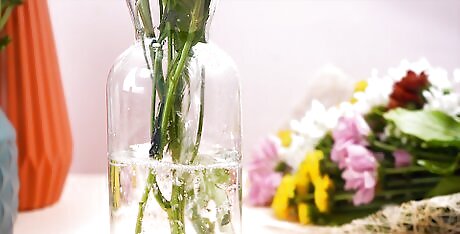
Place flowers in warm water as soon as possible. Once the stems of flowers have been cut, you have removed their life support system. Remove the wrapping paper, as paper can bruise the flowers and cellophane can cause them to sweat. When cut flowers have been left out of water for any length of time, cells start to form over the cut ends of the stems, which will prevent the stems from taking up water readily. To remove this sealed portion, snip off about 2.5cm (1") from the stem ends and then place in water preferably with preservative added, and allow the flowers to have a long drink before arranging.
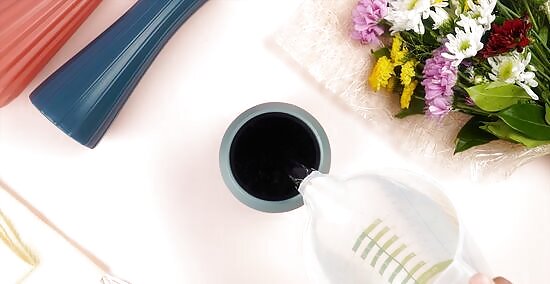
Fill a plastic bucket, one-third to one-half full, with warm water. Warm water should be used as flowers take up warm water more readily than cold. Flowers only drink through the ends of the stems and not through the sides of the stems, and for this reason, buckets should not be filled right up to the top with water, as foliage left on stems below the waterline will rot and pollute the water. This will feed bacteria and the flowers will die more quickly. The foliage of Marigolds, Chrysanthemums, Stock, and Daisies send off a particularly strong odor when left standing underwater over a period of time.
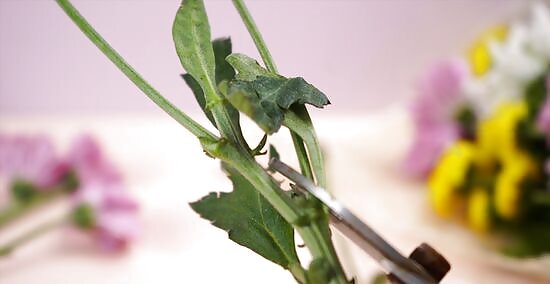
Take the bucket of water into the garden with you. Use a sharp pair of secateurs and cut the flower stems on an angle - a slanted cut allows a better intake of water. Remove all foliage from the lower portion of the stems which would stand under the waterline. Place the flowers immediately in the water.
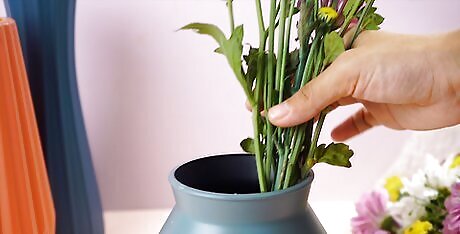
Avoid overcrowding flowers. Allow enough air to circulate between each flower. Too many flowers crowded together in a bucket may cause the petals to become squashed and bruised. Place the bucket in a cool dark place and allow the flowers to have a long drink before being arranged. When picking short-stemmed flowers, use a smaller container.
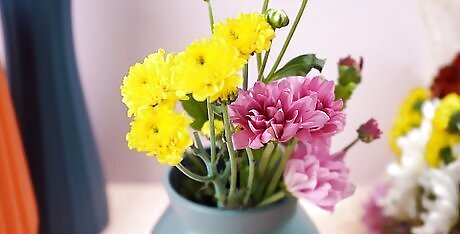
Allow flowers to have a good drink for four to five hours, preferably overnight before arranging. This step is called conditioning. It allows the stems to fill up with water and the flowers will become crisp. These flowers will last twice as long as those that have not been conditioned properly.

Use a flower preservative to destroy bacteria in the water. Flower preservatives are available in garden centers or supermarkets. Another alternative is to use a cap-full of household bleach in the water. If a preservative is not used, the water needs to be changed and the stems cut on an angle daily. If a preservative is used, the stems do not require re-cutting and water needs changing only about twice a week. Flowers, like Freesias, Spray Carnations and Liliums, have lots of buds. By using a preservative in the water, it helps develop the buds to open. Trimming the stems slightly each time you change the water can help with longevity.
Adding Aspirin
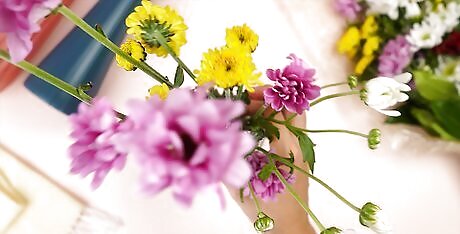
Put a cut flower in a pot or vase. Fill half the pot or vase with water.
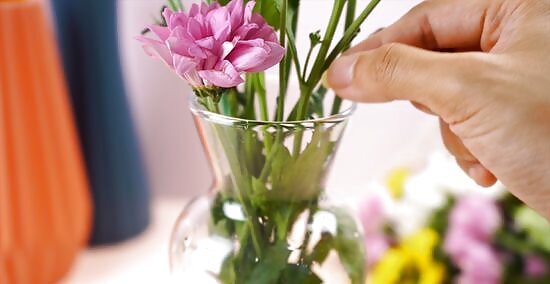
Add one tablet of aspirin.
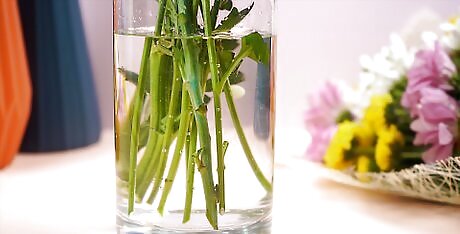
Wait for 1 day. Repeat; add another tablet.
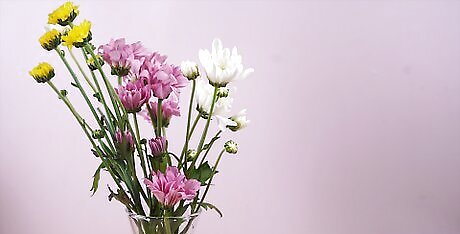
Leave the flowers be after this. The aspirin will help the flowers to stay fresh for around five to nine days without putting in new aspirin pieces.
Using Homemade Plant Food
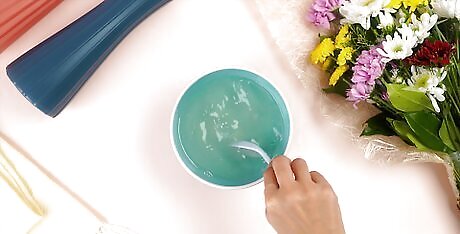
Make homemade plant food. Flowers need food, water, and a clean environment. As such, their water should have a little food, like sugar, and some bleach to slow fungi and bacteria growth. Here's a basic home recipe: Mix together 1 quart water + 2 tablespoons lemon juice + 1 tablespoon sugar + 1/2 teaspoon bleach. Pour into the vase.
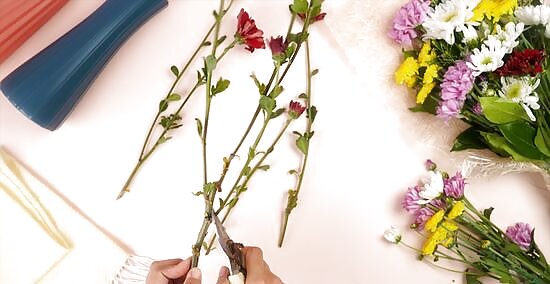
Trim the flower stems. This is to open the stems up to the water. Cut off the dried bottoms at an angle, the angle allowing them to take up as much water as possible. Trim the ends, which tend to get gummy and closed, every three or four days to keep them fresh longer.
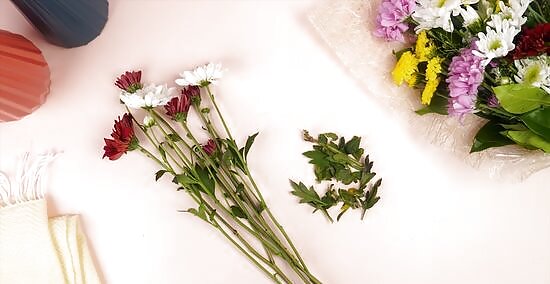
Remove leaves. Leaves left on the stems below the water level will quickly deteriorate and promote mold. Remove all leaves from the stems below the waterline.

Place the trimmed flowers into the homemade plant food. Top up with water as needed.


















Comments
0 comment